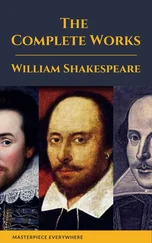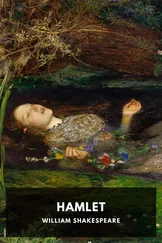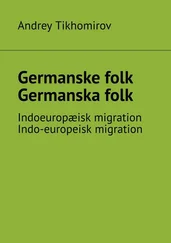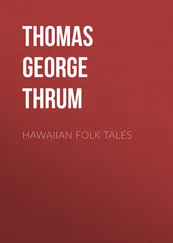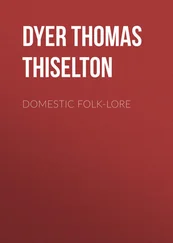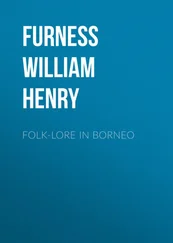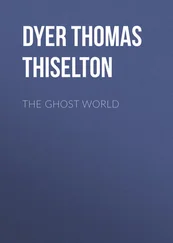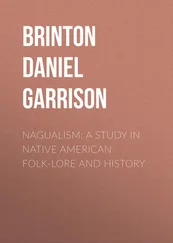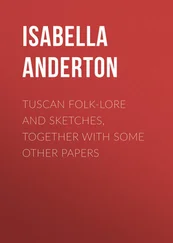Thomas Dyer - Folk-lore of Shakespeare
Здесь есть возможность читать онлайн «Thomas Dyer - Folk-lore of Shakespeare» — ознакомительный отрывок электронной книги совершенно бесплатно, а после прочтения отрывка купить полную версию. В некоторых случаях можно слушать аудио, скачать через торрент в формате fb2 и присутствует краткое содержание. Жанр: foreign_antique, foreign_prose, на английском языке. Описание произведения, (предисловие) а так же отзывы посетителей доступны на портале библиотеки ЛибКат.
- Название:Folk-lore of Shakespeare
- Автор:
- Жанр:
- Год:неизвестен
- ISBN:нет данных
- Рейтинг книги:4 / 5. Голосов: 1
-
Избранное:Добавить в избранное
- Отзывы:
-
Ваша оценка:
- 80
- 1
- 2
- 3
- 4
- 5
Folk-lore of Shakespeare: краткое содержание, описание и аннотация
Предлагаем к чтению аннотацию, описание, краткое содержание или предисловие (зависит от того, что написал сам автор книги «Folk-lore of Shakespeare»). Если вы не нашли необходимую информацию о книге — напишите в комментариях, мы постараемся отыскать её.
Folk-lore of Shakespeare — читать онлайн ознакомительный отрывок
Ниже представлен текст книги, разбитый по страницам. Система сохранения места последней прочитанной страницы, позволяет с удобством читать онлайн бесплатно книгу «Folk-lore of Shakespeare», без необходимости каждый раз заново искать на чём Вы остановились. Поставьте закладку, и сможете в любой момент перейти на страницу, на которой закончили чтение.
Интервал:
Закладка:
156
See Yarrell’s “History of British Birds,” 2d edition, vol. i. p. 218; “Dialect of Leeds,” 1862, p. 329. In “Hamlet” (iii. 2), some modern editions read “ouzle;” the old editions all have weasel , which is now adopted.
157
Miss Baker’s “Northamptonshire Glossary,” 1854, vol. i. p. 94. See Nares’s “Glossary,” 1872, vol. i. p. 124; and “Richard III.,” i. 1.
158
Harting’s “Ornithology of Shakespeare,” p. 144; Halliwell-Phillipps’s “Handbook Index to Shakespeare,” 1866, p. 187. The term finch, also, according to some, may mean either the bullfinch or goldfinch.
159
See Yarrell’s “History of British Birds,” 2d edition, vol. ii. p. 58.
160
Nares’s “Glossary,” vol. i. p. 156; Singer’s “Shakespeare,” 1875, vol. v. p. 115; Dyce’s “Glossary,” 1876, p. 77.
161
Mr. Dyce says that if Dr. Latham had been acquainted with the article “Chouette,” in Cotgrave, he would not probably have suggested that Shakespeare meant here the lapwing or pewit. Some consider the magpie is meant. See Halliwell-Phillipps’s “Handbook Index to Shakespeare,” 1866, p. 83. Professor Newton would read “russet-patted,” or “red-legged,” thinking that Shakespeare meant the chough.
162
“Glossary,” vol. i. p. 162; Singer’s “Notes to Shakespeare,” 1875, vol. v. p. 42.
163
Massinger’s Works, 1813, vol. i. p. 281.
164
“Handbook Index to Shakespeare,” 1866, p. 86.
165
Miss Baker’s “Northamptonshire Glossary,” 1854, vol. i. p. 116.
166
“Coriolanus,” iv. 5; “Troilus and Cressida,” i. 2; “Much Ado About Nothing,” ii. 3; “Twelfth Night,” iii. 4; “Love’s Labour’s Lost,” v. 2, song; “1 Henry VI.” ii. 4.
167
Swainson’s “Weather-Lore,” 1873, p. 240.
168
Henderson’s “Folk-Lore of Northern Counties,” 1879, p. 48.
169
See Douce’s “Illustrations of Shakespeare,” p. 438.
170
See Ibid.
171
See Brand’s “Pop. Antiq.,” 1849, vol. ii. pp. 51-57; Hampson’s “Medii Œvi Kalendarium,” vol. i. p. 84.
172
1st series, vol. iii. p. 404.
173
“Medii Œvi Kalendarium,” vol. i. p. 85.
174
Roberts’s “Social History of Southern Counties of England,” 1856, p. 421; see “British Popular Customs,” 1876, p. 65.
175
Nares’s “Glossary,” 1872, vol. i. p. 203.
176
Singer’s “Shakespeare,” 1875, vol. ix. p. 256; Halliwell-Phillipps’s “Handbook Index to Shakespeare,” p. 112.
177
Dyce’s “Glossary to Shakespeare,” p. 85.
178
“Illustrations of Shakespeare,” 1839, p. 290.
179
“Ornithology of Shakespeare,” p. 171.
180
It is also an ale-house sign.
181
See Dyce’s “Glossary to Shakespeare,” p. 85.
182
See “Book of Days,” 1863, vol. i. p. 157.
183
In “King Lear” (iv. 6), where Edgar says:
“Yond tall anchoring bark,
Diminish’d to her cock; her cock, a buoy
Almost too small for sight.”
the word “cock” is an abbreviation for cock-boat.
184
For superstitions associated with this bird, see Brand’s “Pop. Antiq.,” 1849, vol. iii. p. 218.
185
“Ornithology of Shakespeare,” p. 260.
186
See “Folk-Lore Record,” 1879, vol. i. p. 52; Henderson’s “Folk-Lore of Northern Counties,” 1879, pp. 25, 126, 277.
187
Nares’s “Glossary,” vol. i. p. 208.
188
Cf. “Henry IV.,” iv. 2.
189
Miss Baker’s “Northamptonshire Glossary,” vol. ii. p. 161; Brand’s “Pop. Antiq.,” 1849, vol. iii. p. 393.
190
Cf. “Romeo and Juliet,” i. 5.
191
“A cuckold being called from the cuckoo, the note of that bird was supposed to prognosticate that destiny.” – Nares’s “Glossary,” vol. i. p. 212.
192
Engel’s “Musical Myths and Facts,” 1876, vol. i. p. 9.
193
See Kelly’s “Indo-European Folk-Lore,” 1863, p. 99; “English Folk-Lore,” 1879, pp. 55-62.
194
See Mary Howitt’s “Pictorial Calendar of the Seasons,” p. 155; Knight’s “Pictorial Shakespeare,” vol. i. pp. 225, 226.
195
Chambers’s “Book of Days,” vol. i. p. 531.
196
See Brand’s “Pop. Antiq.,” 1849, vol. ii. p. 201.
197
“Asinaria,” v. 1.
198
Nares, in his “Glossary” (vol. i. p. 212), says: “Cuckold, perhaps, quasi cuckoo’d, i. e. , one served; i. e. , forced to bring up a brood that is not his own.”
199
Singer’s “Shakespeare,” 1875, vol. ix. p. 294.
200
“Ornithology of Shakespeare,” pp. 190, 191.
201
Sir W. Raleigh’s “History of the World,” bk. i. pt. i. ch. 6.
202
Strutt’s “Sports and Pastimes,” 1876, p. 329.
203
There is an allusion to the proverbial saying, “Brag is a good dog, but Hold-fast is a better.”
204
In the same scene we are told,
“A lover’s eyes will gaze an eagle blind.”
Cf. “Romeo and Juliet,” iii. 5; “Richard II.,” iii. 3.
205
Quoted by Harting, in “Ornithology of Shakespeare,” p. 24.
206
Kelly’s “Indo-European Folk-Lore,” pp. 75, 79.
207
Cf. “Antony and Cleopatra,” ii. 2: “This was but as a fly by an eagle.”
208
Josephus, “De Bello Judico,” iii. 5.
209
Harting’s “Ornithology of Shakespeare,” p. 33.
210
Nares’s “Glossary,” vol. i. p. 378.
211
“Execration against Vulcan,” 1640, p. 37.
212
Singer’s “Notes,” 1875, vol. i. p. 283.
213
See “Archæologia,” vol. iii. p. 33.
214
Nares’s “Glossary,” vol. ii. p. 693. Some think that the bullfinch is meant.
215
Singer’s “Notes,” 1875, vol. v. p. 82; see Dyce’s “Glossary,” p. 433.
216
Some doubt exists as to the derivation of gull . Nares says it is from the old French guiller . Tooke holds that gull, guile, wile, and guilt are all from the Anglo-Saxon “wiglian, gewiglian,” that by which any one is deceived. Harting’s “Ornithology of Shakespeare,” p. 267.
Читать дальшеИнтервал:
Закладка:
Похожие книги на «Folk-lore of Shakespeare»
Представляем Вашему вниманию похожие книги на «Folk-lore of Shakespeare» списком для выбора. Мы отобрали схожую по названию и смыслу литературу в надежде предоставить читателям больше вариантов отыскать новые, интересные, ещё непрочитанные произведения.
Обсуждение, отзывы о книге «Folk-lore of Shakespeare» и просто собственные мнения читателей. Оставьте ваши комментарии, напишите, что Вы думаете о произведении, его смысле или главных героях. Укажите что конкретно понравилось, а что нет, и почему Вы так считаете.



